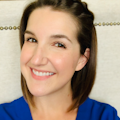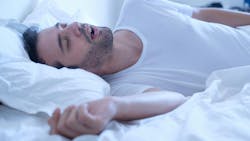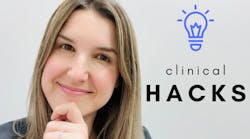The CPAP recall: What every dental professional needs to know
Editor's note: Bethany Montoya, BAS, RDH, is the editorial director of DentistryIQ Clinical Insights. She is a dental sleep medicine provider specializing in prescription oral appliance therapy.
In health care, we have many gold standards that help guide patient care and ensure the best possible treatment outcomes. But what happens when a trusted gold standard becomes a major risk?
What happened with the CPAP?
In 2021, Philips, a world-renowned medical device manufacturer, made the decision to recall 5.5 million CPAP and BiPAP units after more than 116,000 users reported the breakdown of a black polyurethane foam that acts as a noise and vibration reducer.1 This resulted in users inhaling and swallowing toxic foam particles and ultimately was responsible for the untimely demise of 561 individuals.
This experience has sent shockwaves across the medical community, as PAP therapy has long been touted as the gold standard in managing sleep-disordered breathing conditions like obstructive sleep apnea. In a settlement proposed to the FDA, Philips has announced that they will no longer be manufacturing PAP devices in the US and will likely owe several hundred million dollars to the government and affected consumers.
Also by the author … Triple threat: 3 signs you might have sleep apnea
An option for patients: Oral appliance therapy
The recent CPAP scare has left many sleep apnea sufferers and their health-care providers wondering what options are available that offer real results while minimizing the risks. This is where oral health-care professionals can lend their expertise in providing a dental solution for a systemic problem: oral appliance therapy (OAT).
When proper protocol is followed, OAT has been shown to achieve similar health outcomes as CPAP therapy and with a higher adherence rate.2 This is likely because patients generally find an oral appliance to be more comfortable and discreet than a CPAP mask.
Some dental practices offer OAT as an adjunct to their preventive and restorative services, while others have made the full transition into exclusively practicing dental sleep medicine. Whatever the level of your involvement, the value of providing options in sleep apnea management to the patient population can’t be understated. Appliance therapy allows individuals to improve their quality of sleep, take on life’s demands with a clear head, and share the bed with their partner again—basic human needs that millions of American adults with sleep apnea are deprived of.
How can dental professionals advocate for their patients’ airway health? Here are some simple suggestions.
More about sleep apnea … Overcoming sleep dentists’ diagnostic obstacles
Include sleep-related questions on health history forms
Questions on health history forms that ask about snoring, quality of sleep, family history of sleep apnea, past sleep study results, and nighttime bruxing can help us have meaningful conversations about sleep with our patients while they’re in the dental chair. Rating tools like the Epworth Sleepiness Scale or the STOP-Bang Questionnaire require patients to quantify their level of daytime sleepiness and challenge their personal awareness.
Perform an airway assessment during every exam
Many clinicians don’t realize they can easily include an airway assessment in their sequence of care without adding additional time to the patient appointment. You can evaluate occlusion, soft tissues, enamel wear, and oropharyngeal space in tandem with the oral cancer screening—an important component of the routine dental exam that should never be omitted.
Get educated in basic sleep medicine
Whether it’s a one-time course on the foundations of airway health or a more intense program designed to equip clinicians to be dental sleep medicine providers, increasing your education in this area will give you the confidence and direction you need to have important conversations about sleep habits with your patients.
Focus on building a strong interprofessional network
Dental professionals see the oral cavity as a window to the patient’s overall health. There are many clinical findings during a routine dental visit that can signal the need for further evaluation by a primary care physician or specialist, but far too many clinicians either don’t look for oral-systemic connections, don’t discuss them with the patient, or don’t provide them with guidance on how to investigate things further.
If we truly see ourselves as health-care providers, we must insert ourselves into the broader health-care team by having contact information for a variety of practitioners who can assist in continuity of care.
Inform patients of their options
The public falls for three common misconceptions when it comes to sleep-disordered breathing:
- It’s not a big deal.
- My only option for testing is an overnight, in-lab sleep test.
- CPAP is the only way to manage sleep apnea.
Dental professionals can help break these stigmas by educating patients about the various modes of testing and treatment for their snoring and sleep apnea. Home sleep testing has become the new standard; it’s convenient and patients can easily comply. Many sleep test providers even ship equipment right to the patient’s front door.
And when it concerns treatment, remember that the goal is not to be pro-PAP, pro-OAT, or pro-surgery—but rather, pro-option. Patients need to have a choice in their therapy to ensure overall compliance and treatment success.
Dental professionals play a vital role
The CPAP recall has shown us that even gold standards carry risks, and what we recommend to patients can impact their lives far beyond their condition. In the spirit of providing individualized care, patients need to be educated about their options. Prescription oral appliance therapy is just one of many ways to effectively manage sleep-disordered breathing, but surprisingly there continues to be a general lack of awareness about OAT within the medical community and the patient population. Dental professionals can play a vital role in introducing patients to a restful night’s sleep, which is yet another way we can keep them smiling.
Editor’s note: This article first appeared in Clinical Insights newsletter, a publication of the Endeavor Business Media Dental Group. Read more articles and subscribe.
References
- Gibson K. FDA says 561 deaths tied to recalled Philips sleep apnea machines. CBS News. February 4, 2024. https://www.cbsnews.com/amp/news/fda-sleep-apnea-philips-recall-cpap/
- Dieltjens M, Vanderveken O. Oral appliances in obstructive sleep apnea. Healthcare (Basel). 2019;7(4):141. doi:10.3390/healthcare7040141
Bethany Montoya, BAS, RDH, is the editorial director of DentistryIQ Clinical Insights, is a practicing dental hygienist, and serves the industry as an author, speaker, and thought leader. She has devoted her most recent years to her social media brand, @HumanRDH, where she creates content focusing on career fulfillment, mental health, and the “human” aspect of oral health care. Contact her at [email protected].
About the Author

Bethany Montoya, MBA, RDH
Bethany Montoya, MBA, RDH, is a practicing dental hygienist, editorial director of DentistryIQ's Clinical Insights newsletter, and a key opinion leader. She has advanced knowledge and training in complex cosmetic dentistry, dental sleep medicine, and implant dentistry. Recently, she has devoted her time to dentistry’s personal and interpersonal aspects through her social media brand, @humanrdh. Contact Bethany at [email protected].


